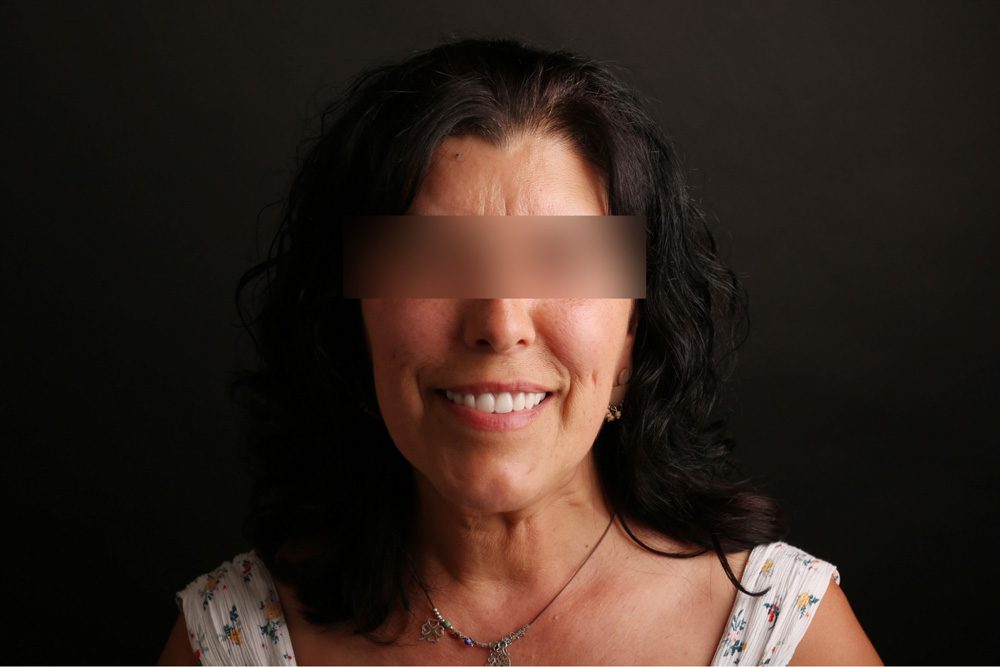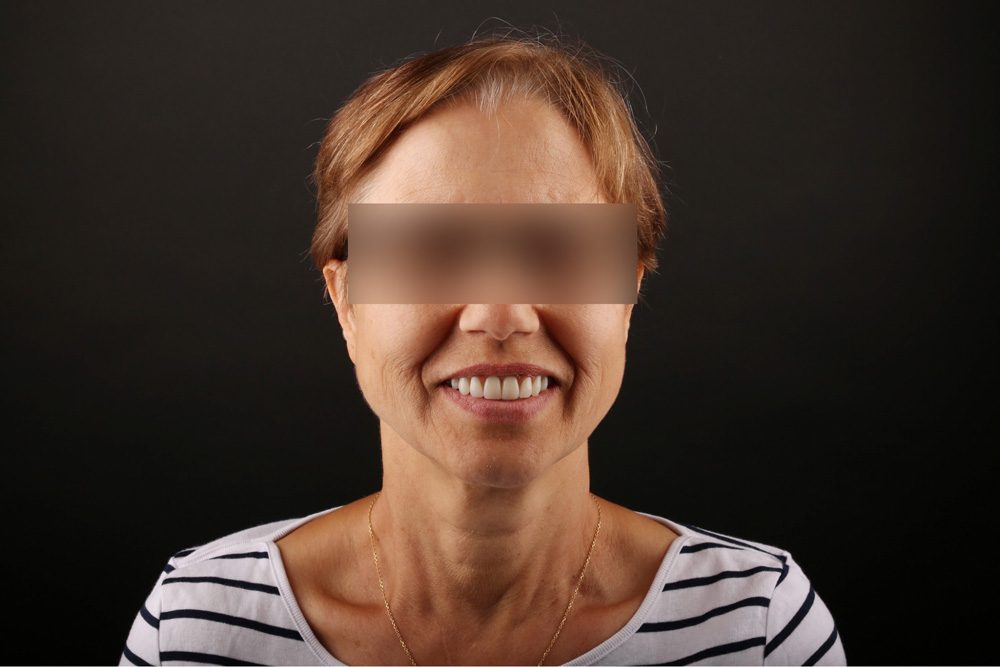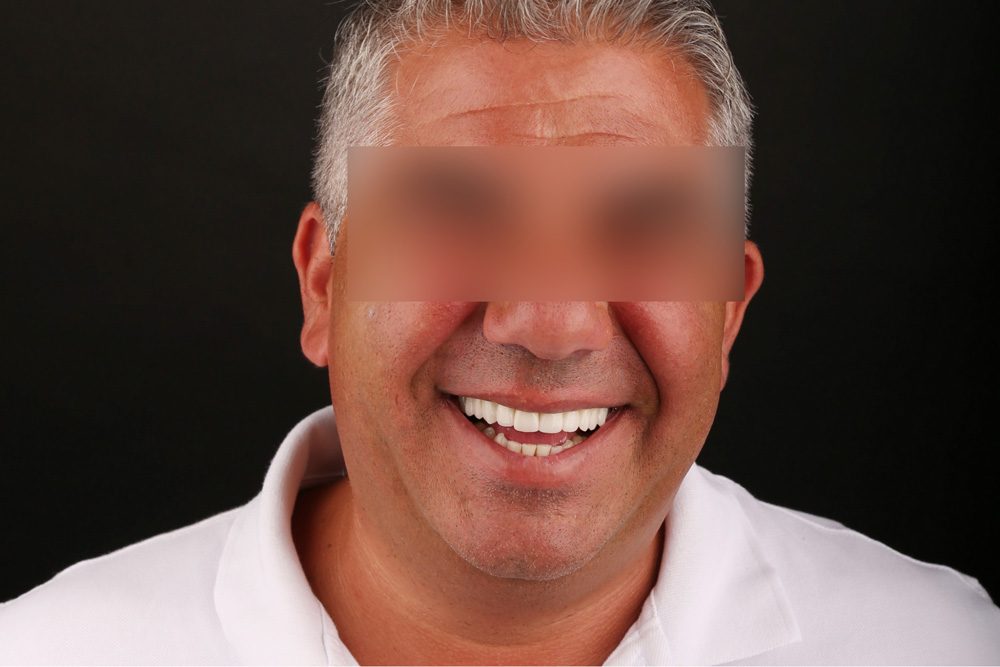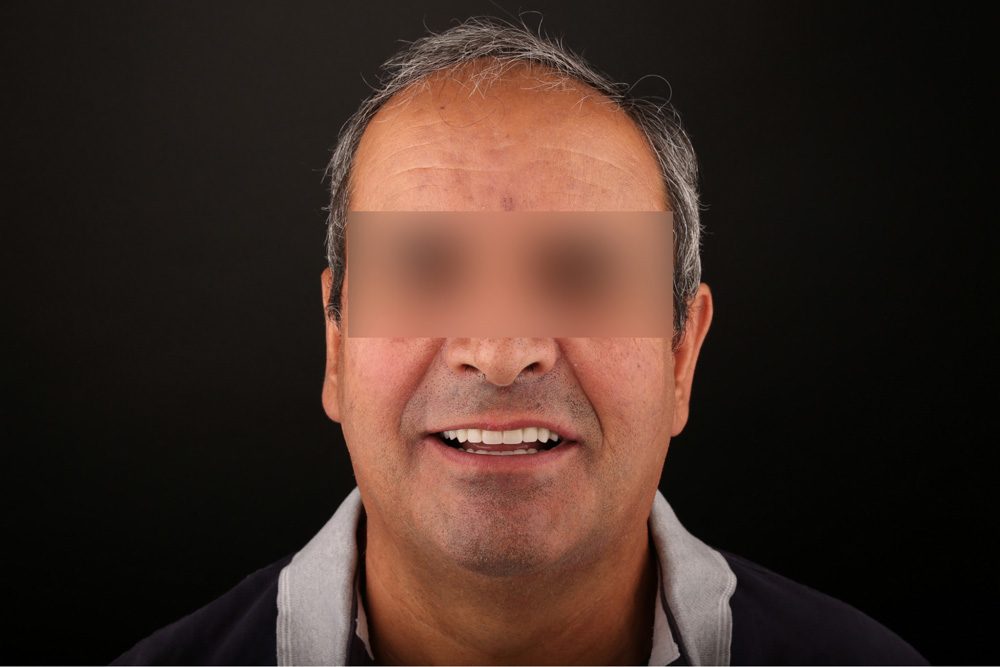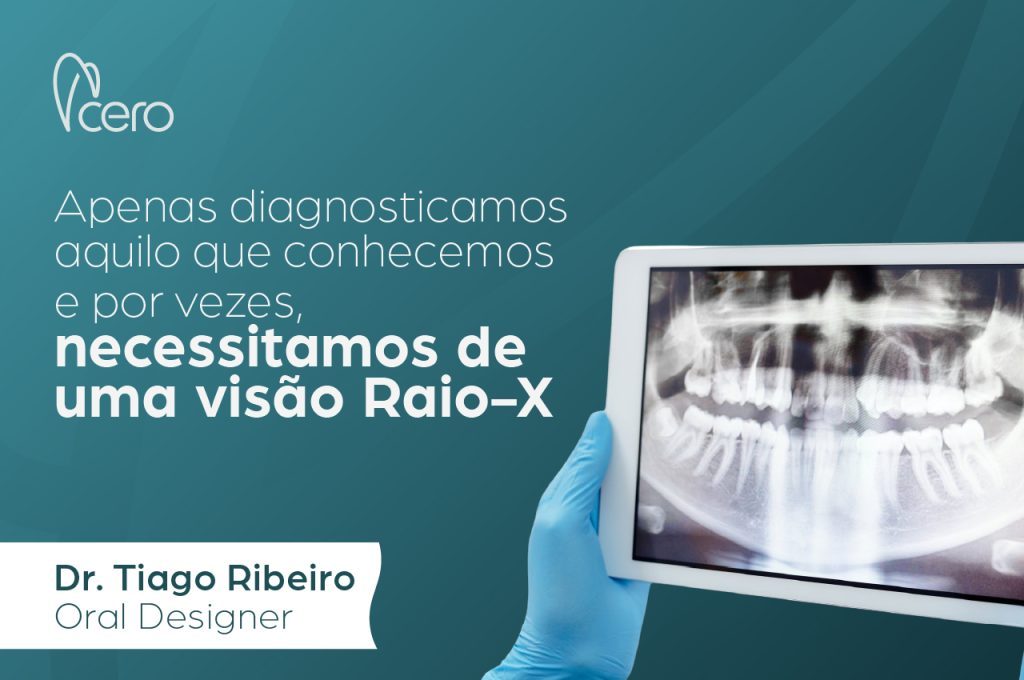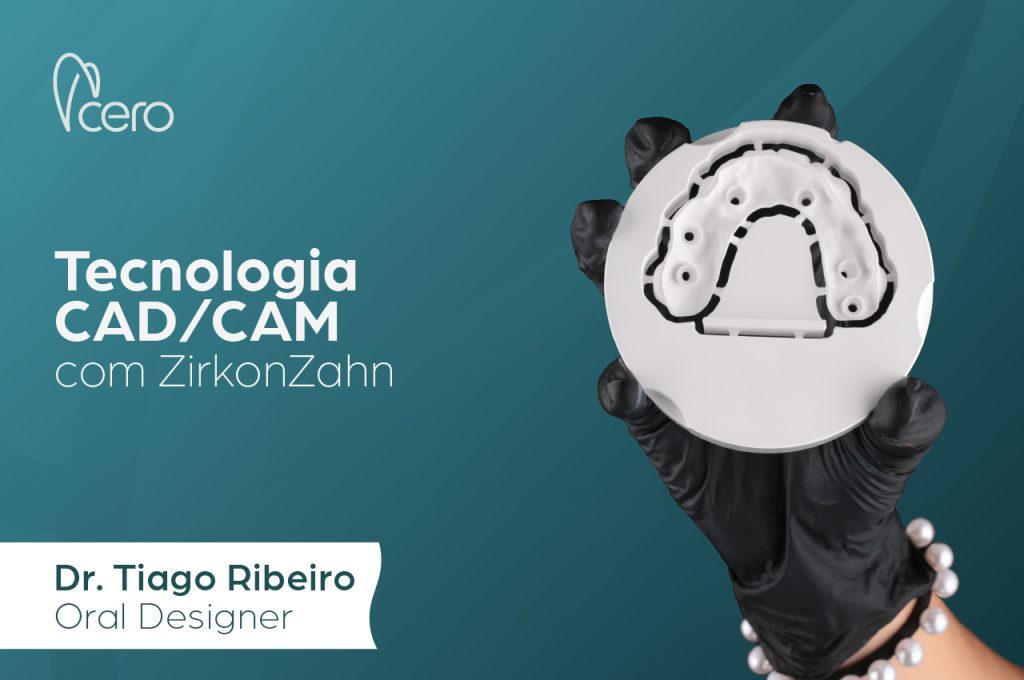The personalization of the smile – visagism
To understand Visagism we have to understand and understand what aesthetics is.
The word aesthetics comes from the Greek aisthésis – perception, sensation, sensibility.
Objectively, it is based on what is the concept of perception and the sensation of what is considered beauty. He is dedicated to the evaluation of the various ways of feeling art, colors, images, customs. Providing a sense of pleasure and delight after being observed through the various senses.
Beauty depends on what is considered by the customs of each era or society. On this level, the media has contributed strongly to this concept of Aesthetics, thus leading to the term Visagism.
Nowadays we have increasingly witnessed a growing concern with regard to Dental Aesthetics. In a society where the smile has become the main business card, the absence of dental parts or the so-called “yellow smile” is inconceivable.
With this growing demand for the perfect smile, the knowledge and techniques available to dentists have increased in recent years.
The personalization of a smile requires extensive analysis by the Dentist, whether extra-orally or intra-orally.
From an extra-oral point of view, a series of photographic documentation of the patient is carried out in different planes and perspectives, with static postures and dynamic movements that allow us to evaluate all the harmony of a smile.
Intraorally, a photographic sequence is performed to evaluate the entire dento-alveolar structure, as well as the intermaxillary relationships present.
All these photographic records will allow the Dentist, in a time after the consultation, allowing calmly and with the greatest scientific rigor, to define the best possible treatment plan for the patient in question.
Our clinical team at CERO, namely the Department of Oral Aesthetics, having been part of their training at the International University of Catalonia (UIC) in Barcelona, has as a basis for their aesthetic analyses the concepts and guidelines published by Prof. Dr. Mauro Fradeani in the book Aesthetic Rehabilitation in Fixed Prosthodontics.
To this end, we give special importance to the aesthetic analysis described in his book, where from photographs at rest, maximum smile, sides at 45º and 90º, we pay attention to the facial lines and proportions that characterize each patient. These references will allow us to guide you in the construction of each smile, both at the midline level and dental exposure at rest or maximum smile.
The intraoral photographic record, in addition to what has been described above, will allow us to analyze all the teeth more accurately, as well as the relationship between them.
Another resource, no less important, is the making of a short video of the patient interacting/talking with the clinical team, allowing us to evaluate all the dynamism of the smile, and the relationship between the teeth, gums and lips.
In recent years, different techniques have been developed to plan each smile. One of the tools used by CERO’s clinical team is the Digital Smile Design, created by Dr. Christian Coachman. This multipurpose protocol offers numerous advantages:
– Ease of diagnosis through an aesthetic and structural evaluation both intra and extra-orally;
– Improved communication between team members, providing better visual perception, education and motivation for patients;
– Greater effectiveness in the planning and presentation of the case;
– Clinical efficiency and predictability through digital technology.
Digital Smile Design has the ability to involve patients in the restorative and aesthetic process, making them one of the main architects of their own treatment, where there is the possibility of sharing goals, expressing their desires and expectations with the restorative team.
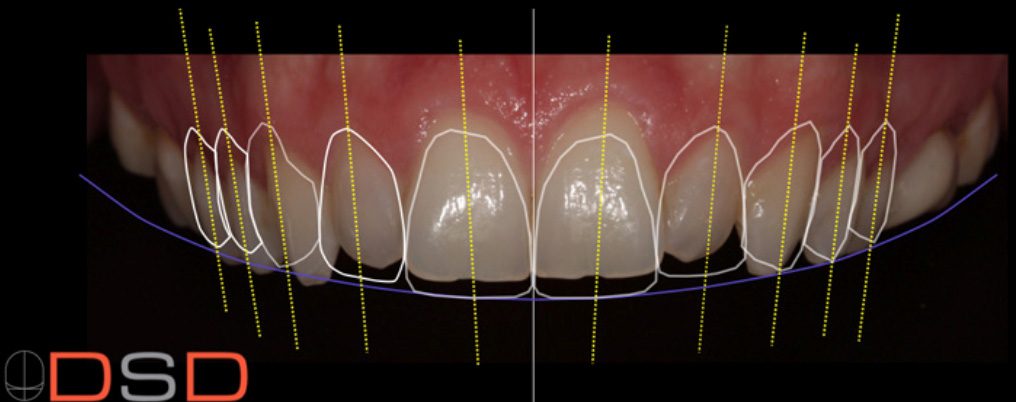
It is important to note that Digital Smile Design is a first virtual planning, which at a later stage will allow us to create a set of temporary pieces (mock-up) that will be placed in the mouth for the patient to take a “test-drive”.
The time of use of this mock-up may vary, depending on whether changes or adjustments to the initial project are necessary. Once the patient feels comfortable and satisfied with the shape, size, exposure of their new teeth, we can start moving forward with the making of the new teeth.
With regard to the choice and shape of the teeth, there are some guidelines that guide us to the making of new teeth. From the first day the patient arrives at the CERO clinic, we begin an in-depth analysis of their personality characteristics, as well as their wishes and expectations.
All these factors are carefully observed. According to Paulucci et al., the characteristics of each personality are reflected in the shapes of our teeth, as we can see in the following image.
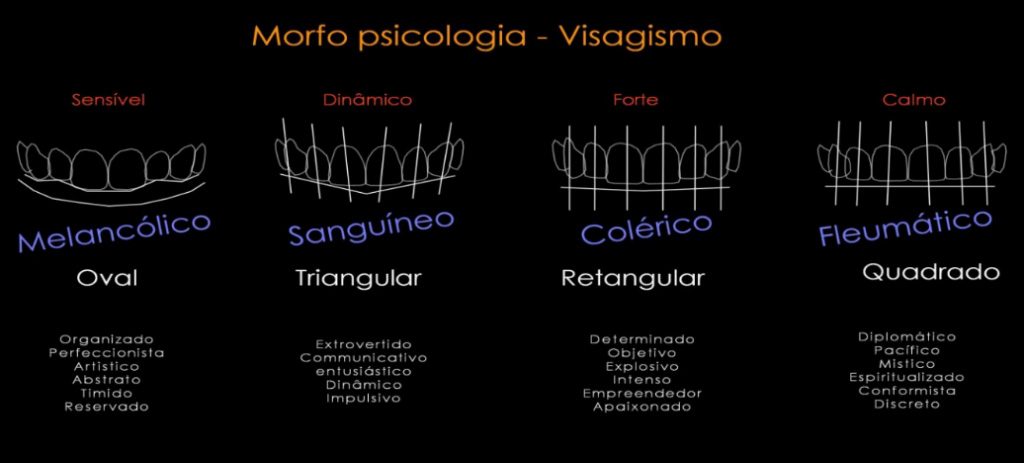
Therefore, taking these characteristics into consideration, we can present the following proposal for the oral rehabilitation of each psychological profile:
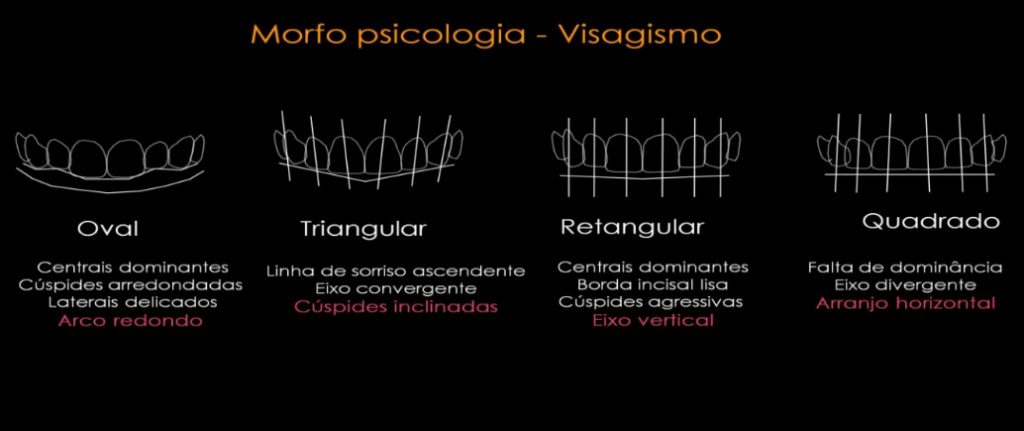
Currently, having an oral cavity without biological and functional problems is no longer enough for most patients. Increasingly, his desire is to have smiles that are naturally beautiful and in harmony with his physical characteristics and, more importantly, with his personality.
Our CERO clinical team is aware of all the factors that contribute to making our patients more satisfied beyond conventional techniques. Each personalized smile can be easily visualized and enhanced with each patient’s ideals.
Visagism is, without a doubt, a very important concept for dentistry, as it aims to reconstruct personalized smiles using visual art. It aims to meticulously design a smile that expresses the patient’s identity, lifestyle and personality. In this way, the harmony of the smile will be achieved, reaching or even exceeding the patient’s expectations. This will improve your self-esteem and bring incalculable benefits to your personal, family and social life.
